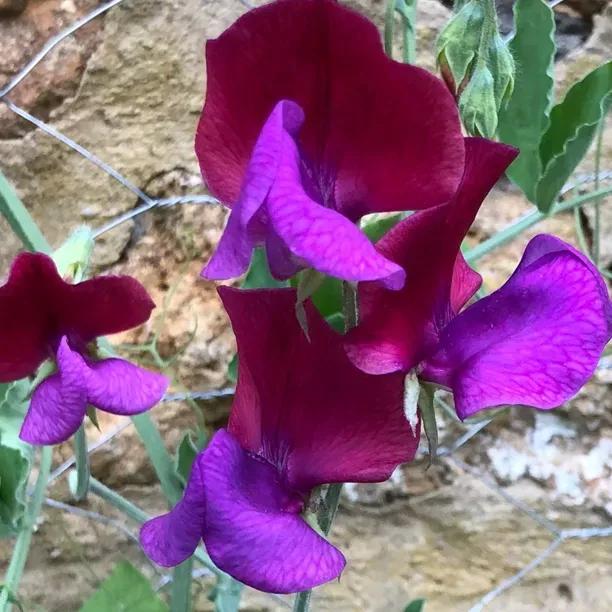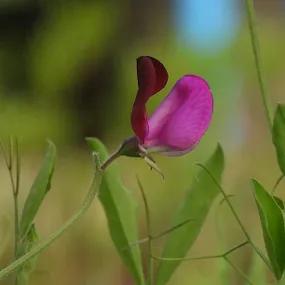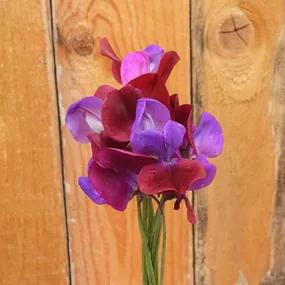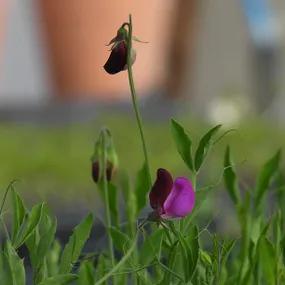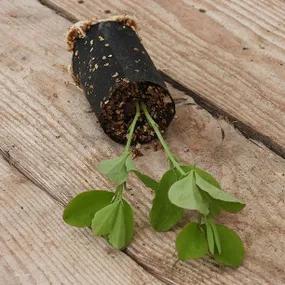Matucana Sweet Pea Seedlings & Seeds
Honest Delivery Prices- Colour: purple and deep crimson
- Stem: medium
- Height: 2m
- Type: heirloom Grandiflora
- Scent: outstanding
- Flowering: June to September
- Planting Months: March-June
- RHS Award of Garden Merit
Description
Matucana Sweet Peas
Matucana may be an old-fashioned heirloom grandiflora, but by most accounts it is the most powerfully scented sweet pea of them all. The scent is as arresting as the fabulous colour: a two tone treat of vibrant magenta and deep purple. The resulting fusion of colour and scent is absolutely knockout. It's a prolific flowerer, too, hence the RHS Award of Garden Merit. As always with sweet peas, the more you pick, the more your plants will flower, so get out there every day and snip a few stems for a vase: you may even end up having flowers all the way through until October or November if you're dedicated.
Matucana doesn't have the longest of stems, nor the large flowers of a modern-day Spencer type, so it's not a show grower's variety, and you're better off aiming to pick small posies for a rustic jug rather than long stems for a tall vase. But when the scent's this good, no one's complaining.
Take a look at the rest of our range of sweet peas.
Our Sweet Peas are delivered in purpose-designed, recycled cardboard packaging, and are ready to be planted out when you get them.
We generally send them out between March and May, but we will email you with the likely delivery timescale once you have placed your order.
Features
- Colour: purple and deep crimson bicolour
- Stem: medium
- Height: 2m
- Type: heirloom Grandiflora
- Scent: outstanding
- Flowering: June to September
- Planting Months: March-June
- RHS Award of Garden Merit
Growing
Always grow sweet peas up some kind of support - be that a trellis, obelisk or wigwam of bamboo canes. You can even plant them in the vegetable patch where they'll flower up among the runner beans and help attract pollinators. Or combine them with other colours of sweet peas. Try them with John Gray, a pretty watercolour pink with large flowers, or pure white Mrs Collier, whose perfume is very nearly as intoxicating.
Did You Know?
Matucana is a town in central Peru known for its beautiful waterfall.
Planting Instructions
Plant Matucana Sweet Peas in well prepared, moist soil that ideally has been improved with organic matter. Erect supports for the peas to climb up before planting. They can also be planted in pots of sufficient size - allow 6 litres per plant - and with an ideal planting medium of 50% compost, 40 %top soil and 10% well-rotted manure. General purpose compost will do however but produces fewer flowers.
Matucana can be grown in a container, as long as it is large enough - allow at least 5 litres per plant - and they are kept well fed and watered, as sweet peas are famously thirsty and greedy. Make sure they get plenty of water and potassium (potash) rich plant food, such as tomato fertiliser.
The principal requirement is enough water - Sweet Peas are thirsty and hungry plants. They can cope with a little shade but flower better in full sun.
Space each plant about 30 cm apart and about 5 cm from its support. The hole should be deep enough to accommodate the longest root and the soil should come up to the level of the first side shoot. Use wire/netting/twine between the supports so that the Sweet Pea can climb naturally. You will still need to tie them into the frame. They grow fast, so check every ten days or so.
Water well; the soil around sweet peas should never dry out. As the flowers develop pick them and keep on picking, otherwise they start to form seedpods and will stop flowering altogether. Keep tying in and picking for as long as you can. Perfectionists will remove the curling tendrils which grip other stems and can result in flowers with wiggly stems and also will remove side shoots. see the website for more advice on training sweetpeas.
, By all means, apply a high potash and phosphate fertiliser during the growing season. (Sweet Peas actually fix nitrogen from the air into the soil so you don't need more of that.) Home-made comfrey liquid is perfect or Tomorite will do especially if you are on a sandy soil.

